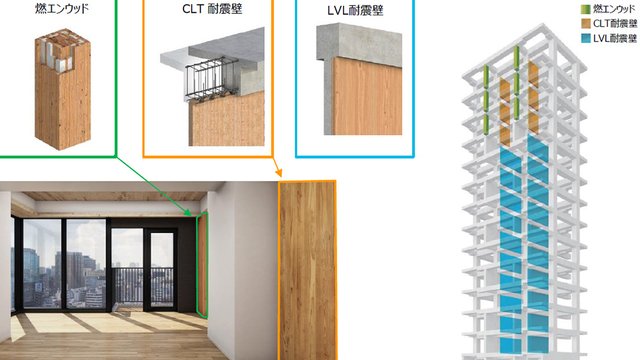As the world’s population keeps growing and the amount of resource and energy consumption rises simultaneously, countries and enterprises must make conversions in strategies or business models and make action to achieve a sustainable society.
Accordingly, the Japanese government has set goals to realize and promote Zero Energy Housing (ZEH). It requires net annual energy consumption in a house to be around zero or below, which is set to be achieved by 2030. In order to realize this goal, homebuilders need to improve the insulation of building envelope and equip high-efficiency installations in newly built houses.

The expected ‘Proud Kanda Surugadai’. (Image: nomura-re-hd.co.jp)
Like so, Japanese housing is at a turning point in creating a sustainable society and future. Last month, Takenaka Corporation, a major construction company in Japan, and Nomura Real Estate Holdings Inc., brokerage of residential real estate, has announced to build a 14-storey condo in Tokyo called ‘Proud Kanda Surugadai,’ using Japanese wood abundantly for both its structural elements and interior. This project aims to contribute to circulating forest resources and to promote the well-being of the residents.
Solving the stagnancy of Japan’s forestry too
Although two-thirds of Japanese land is covered with forests and many are ready for harvest, forest resources are underutilized in Japan. Trees absorb carbon dioxide and release oxygen into the air, but as they mature, the amount of carbon dioxide absorbed decreases. Therefore, cutting down trees and planting young trees, namely circulating the forest, is important for the environment.
As for the interior, absorption and desorption of moisture by wood keeps the room humidity at a pleasant level. In addition, the scent and touch of wood interior has stress relief effect, and it is known that visible wood can also lower stress and improve the health and well-being of residents. Moreover, research shows the more wood used for room interior the longer time people get ‘deep sleep’ (which occurs in the final stage of non-rapid eye movement sleep). This sleep is efficient for people to feel refreshed when they wake up in the morning and affects work efficiency.

Intended elements of the new building. (Image: nomura-re-hd.co.jp)
Japanese red pine and cedar are mainly used to build the structure elements and the interior of the new condo that is planned to be built by March 2021. Environmental friendliness is important for realizing a sustainable society; construction and housing are no exception. The new condo revealed sustainable building does not only contribute to improving the environment but beget contentment and advance the well-being of the occupant, which would motivate more to choose this green housing in years to come.
[Reference] https://www.takenaka.co.jp/takenaka_e/mokuzou-mokushitu/
[Reference] https://www.takenaka.co.jp/takenaka_e/library/es_report/pdf/takenaka_CR2019e.pdf
[Reference] https://www.enecho.meti.go.jp/category/saving_and_new/saving/zeh_report/pdf/report_160212_en.pdf
(This article was originally published on Zenbird Media.)
Additional Resources
Zenbird Media Homepage
More on sustainable buildings
More social good coming out of Tokyo